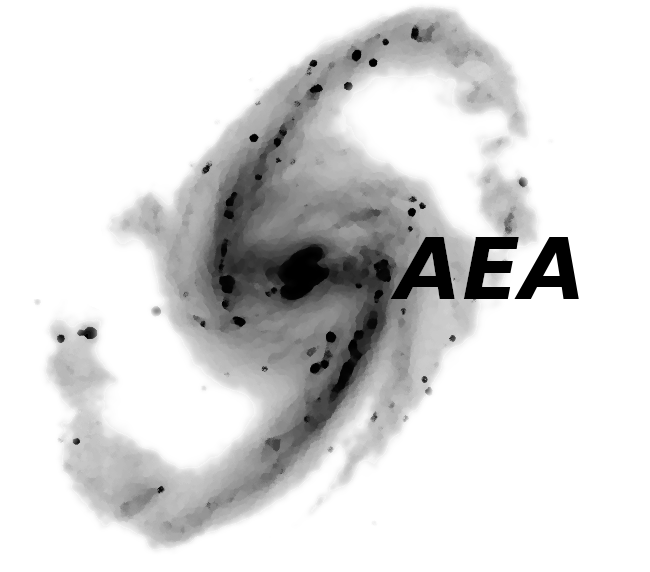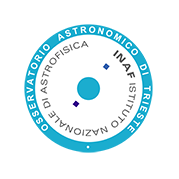 Fabio Fontanot
Fabio Fontanot
My Personal Page Design
Istituto Nazionale di Astrofisica
Osservatorio Astronomico di Trieste
Via Tiepolo 11 34143 Trieste, Italy
RESEARCH
My main research interest lies in the understanding of the complex
network of physical processes responsible for the formation and
redshift evolution of the various galaxy populations. I privilege a
theoretical approach based on numerical techniques such as numerical
simulations and semi-analytical models (SAMs), but I am also involved
in observational efforts. In particular, the computational flexibility
of SAMs allows for a comparison of their predictions over cosmological
volumes, with a variety of observational constraints (mainly coming
from multiwavelength surveys covering a wide range of the
electromagnetic spectrum). A particular aspect of my research lies in
the focus on the join evolution of Active Galactic Nuclei (AGNs) and
their host galaxies, and it can be broadly divided into two main,
strongly connected, approaches.
First, I am actively involved in the development of two
state-of-the-art SAMs, i.e. MORGANA (Monaco, Fontanot &
Taffoni, 2007) and GAEA (Hirschmann, De Lucia & Fontanot 2016),
but I usually handle the predictions of a variety of such models
(including De Lucia & Blaizot 2007; Wang et al., 2008; Somerville et
al., 2008; Kang et al., 2008; Guo et al., 2011), as a result of a
scientific web built up during my post-doctoral experiences. The
comparison of the predictions of different models is nowadays a key
asset for a deeper understanding of theoretical models, as it allows
to highlight common trends, successes and failures among the different
formulations for the key physical processes adopted by different
approaches. Indeed, the quantitative comparison between predictions of
different SAMs covers a relevant part of my scientific outcome
(e.g. Kim et al., 2009; Maccio' et al., 2009; De Lucia et al. 2010;
Henriquez et al., 2011). My main contribution concerns the study of
the redshift evolution of stellar mass, star formation rate and black
hole accretion in model galaxies, with detailed comparisons with the
many evidences for the so-called "downsizing" trend of galaxy
formation. In Fontanot et al. (2009b), I show, for the first
time, that models of galaxy evolution have a common drawback in a too
efficient formation of galaxies below the knee of the mass function,
which leads to tensions in reproducing the evolution of the
low-mass-end of the stellar mass function. Conversely, in
Fontanot et al. 2011a, I point out that the different prescriptions
of radio-mode AGN feedback currently implemented in several models of
galaxy formation are not able to reproduce the distribution of
galaxies into different activity classes (star forming, AGN and radio
active). Both results stress the need for a revision in the modeling
of the relevant physical processes in SAMs. I am currently involved in
a number of international collaborations trying to characterize the
effect of different prescriptions for the main physical processes on
model predictions (Knebe et al., 2015). In particular, we focus on the
study of cooling and merger rates (De Lucia et al., 2010, Monaco et
al., 2014), of star formation and stellar feedback (Fontanot et al.,
2013a), and on the description of the different theoretical channels
of bulge formation, as a mean to understand the processes responsible
for the morphological type of galaxies as a function of their stellar
mass and environment (De Lucia et al., 2011; Fontanot et al., 2011b;
De Lucia et al., 2012; Fontanot et al., 2015c).
As a natural complementary theme, the comparison of the
photometric properties of galaxies, as predicted by theoretical
models, with observational data provides the framework for
constraining the main physical mechanisms responsible for galaxy
evolution. I develop codes for interfacing spectrophotometric codes
with SAMs predictions, generating synthetic spectra of model galaxies
and evaluating their expected magnitudes/fluxes in different
photometric systems. I build mock catalogues covering a large spectral
range (from the UV to the Radio) and I develop algorithms to reproduce
the properties of different surveys (both wide area and "light cones")
and to predict number counts and luminosity functions (plus their
redshift evolution) for different galaxy populations at different
wavelengths. I typically compare synthetic photometry with
multiwavelength surveys, with the aim of understanding the physical
processes responsible for the joint evolution of AGNs and their host
galaxies (using X-ray, optical and radio data), the assembly of
different galaxy populations (using UV-to-optical bands and colors)
and the redshift evolution of the obscured and unobscured star
formation rate and black hole accretion (using optical-to-infrared
fluxes). In particular, the focus on the joint evolution of AGNs and
host galaxies led to interesting constraints on the interplay between
AGN and stellar feedback, showing that the former is responsible to
set the conditions for the triggering of a galactic wind (Monaco &
Fontanot 2005). This model for AGN-triggered winds allow me to study
the evolution of the AGN luminosity function (Fontanot et al.,
2006), and, more recently, to propose a first physical explanation
for the bended shape of the local Black Hole-Bulge relation
(Fontanot, Monaco & Shankar 2015). Multiwavelength data have been
relevant also in other projects, for example in Fontanot et al.,
(2007b), where I discuss the assembly of massive galaxies and, for
the first time, show that SAMs are able to reproduce the number
density of sub-millimeter galaxies using an universal stellar initial
mass function, or in Fontanot & Monaco (2010), where I discuss
the origin of the different galaxy populations which contributes to
the Extremely Red Objects (ERO) selection, showing that there is no
simple evolutionary sequence for the formation of z=0 massive
galaxies, going through a sub-mm-bright phase and then an ERO phase,
or, more recently, in Fontanot et al. (2016), where I discuss the
impact of a variable (SFR dependent) stellar Initial Mass Function on
the physical properties, chemical enrichment and mass assembly of
model galaxies. These skills result of fundamental importance also for
my contribution to a number of ongoing collaborations (see e.g.,
Pasquali et al., 2010; Skibba et al., 2010; Wilman et al, 2013;
Fossati et al., 2015; Gruppioni et al., 2015). In the field of
synthetic photometry, I am involved in the quantitative comparison
between the predictions of radiative transfer codes (such as GRASIL)
and analytical prescriptions for dust attenuation. The
emphasis of my work is on the prediction of optical (Fontanot et
al., 2009a) and infrared (Fontanot & Somerville 2011) fluxes and on
their impact on statistical quantities like the luminosity
functions. The results are of great interest to better understand and
quantify the level of theoretical uncertainty connected with the
modeling of dust absorption and re-emission. This has a huge impact
for the interpretation of the evolution of the star formation history
as inferred by data coming from current and future (SPICA) infrared
missions. Moreover, I am currently working on the relative
contribution of AGNs and galaxies to the cosmic Reionization of
neutral hydrogen (Fontanot, Cristiani & Vanzella, 2012), using the
observed cosmic ionizing background as a constrain to the Lyman
continuum photon escape fraction of the sources responsible for
reionization (Fontanot et al., 2014). Our work clearly favors a
relevant contribution of both AGNs and galaxies to the total
My research experience is not limited to the theoretical
modeling of galaxy evolution, but also includes observational
programs. I joined the GOODS Team and I led a small research unit,
aimed at the observational determination of the QSO luminosity
function at 3.5 < z < 5.2 (Fontanot et al., 2007a). I gained
experience in handling multicolour photometry of large observational
datasets, in matching broad-band observations coming from different
instruments, and in tailoring different colour selection criteria. I
developed algorithms for cloning QSO colours, starting from
low-redshift complete spectral samples. These synthetic colours were
used to implement a Monte Carlo algorithm for the estimate of the QSO
luminosity function, which takes into account the expected colour
distribution, K-correction distribution, spectroscopic incompleteness,
and selection function. I also collaborated to other projects, helping
with the interpretation of multiwavelength data, using both
semi-analytical and semi-empirical techniques (Fontana et al., 2006;
Santini et al., 2009; Fontanot et al., 2012a). I joined the
PanSTARRS Team, with the duty of defining the expected colours of z > 5
QSO in the proposed photometric system (Fontanot et al., 2007b). I
am currently part of the EUCLID collaboration (Legacy Science Team and
the Operational Unit - Level 3) and I also joined the Galaxy Evolution
Working Group responsible for setting the scientific case for the
proposed SPICA mission. In both cases, my contribution to the project
is related to the development of theoretical tools to foresee the
scientific achievements of the survey (thus including the development
and testing of selection/luminosity/mass function algorithms and the
comparison of foreseen data with the predictions of theoretical models
of galaxy evolution). In particular, I have an ongoing program aimed
at characterizing the impact of modified Dark Energy cosmologies to
the predictions of galaxy formation models. This project involves the
realization of a suite of N-body cosmological simulations relying on
different Dark Energy cosmologies, the definition of merger trees for
the evolution of the Large Scale Structure as traced by Dark Matter
Haloes, and the implementation of consistent SAMs to follow the
evolution of the baryonic content of haloes (Fontanot et al.,
2013b, 2012c, 2015a, 2015b). This project has relevant implications
for future missions like EUCLID, as it allows me to quantify the
expected deviations from a concordance cosmological scenario of the
statistical properties of large galaxy samples and to select the
observational test best suited to discriminate between the different
cosmological models. I am also involved in the VANDELS survey, aimed
at obtaining a deep spectroscopic survey of high-redshift galaxies.



